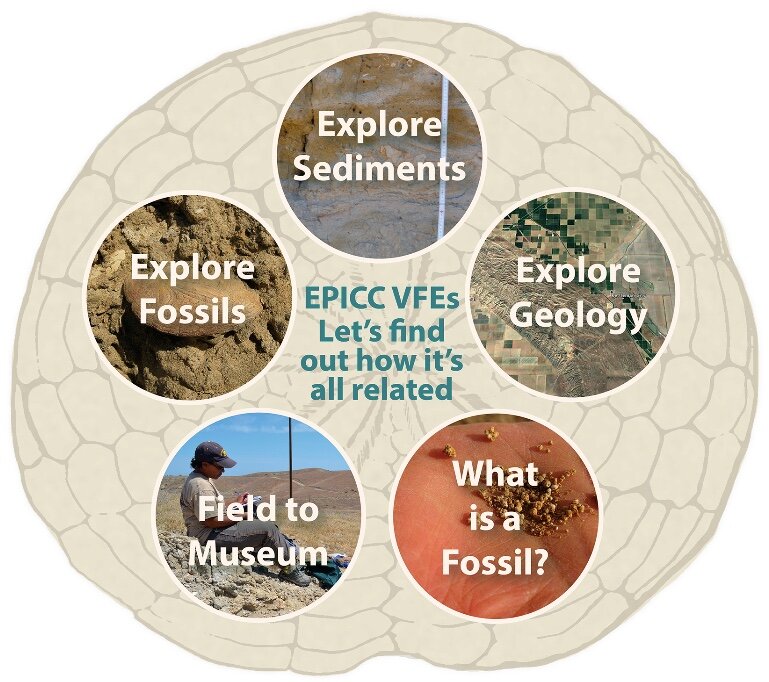Virtual Field Experiences
Virtual fieldwork experiences enable us to visit places digitally that we may be able to visit only infrequently, if ever. Scientists can study Mars or the deep ocean remotely, and students can visit places around the world from their community. Further, teachers and students can make their own virtua fieldwork experiences, compile their observations to share with each other, to demonstrate their learning, and to revisit a place repeatedly from different perspectives. New inexpensive technologies allow people of any background, from young students to scientists, to document their fieldwork experiences visually and with digital data that augment traditional field techniques.
Ideally, VFEs don’t replace real world trips, but motivate users to seek to visit field sites in person and to share their experiences by creating additional VFEs. Aspects of VFEs can also be used in the field to effectively travel through time, to shift perspective, and to aid in seeing details. The advent of smartphones and tablets have greatly expanded possibilities.
Beverly Beach in northern Oregon.
Virtual Fieldwork Experiences on Earth@Home
PRI is a leader in creating and teaching about virtual fieldwork experiences. On the Virtual Fieldwork section of PRI’s Earth@Home website, you can find extensive information about making VFEs, together with links to VFEs by PRI staff and by teachers from PRI workshops.
EPICC VFEs
Virtual fieldwork experiences on classic paleontological field sites along the Pacific coast associated with the Eastern Pacific Invertebrate Communities of the Cenozoic (EPICC) project can be found at epiccvfe.berkeley.edu. The VFEs have been made in partnership with colleagues at the University of California Museum of Paleontology. The VFEs are designed in part to be used in secondary school and college classes.



